Hour 16:11
21 Oct 25
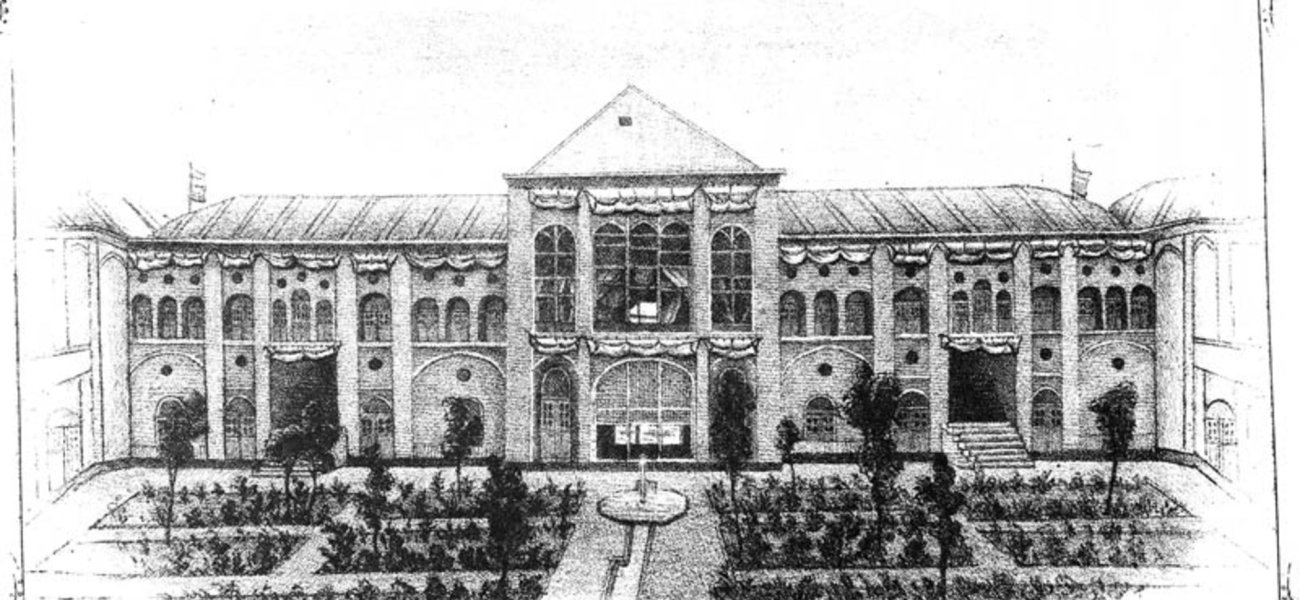
In contemporary Iranian history, the first time a street was developed in a modern and contemporary style was during the grand vizierate of Mirza Taqi Khan Amir Kabir, the famous and capable prime minister (grand vizier) of Naser al-Din Shah. At that time, some of the alleys leading to the royal citadel (present-day Arg Square and Golestan Palace) were levelled and paved with stone. However, carriages would slip on the cobblestones, and most coachmen complained. As a result, they discontinued the paving of other streets. Consequently, until the late Qajar era, the rest of Tehran's passageways consisted of garden alleys and narrow, irregular paths with unpaved surfaces.
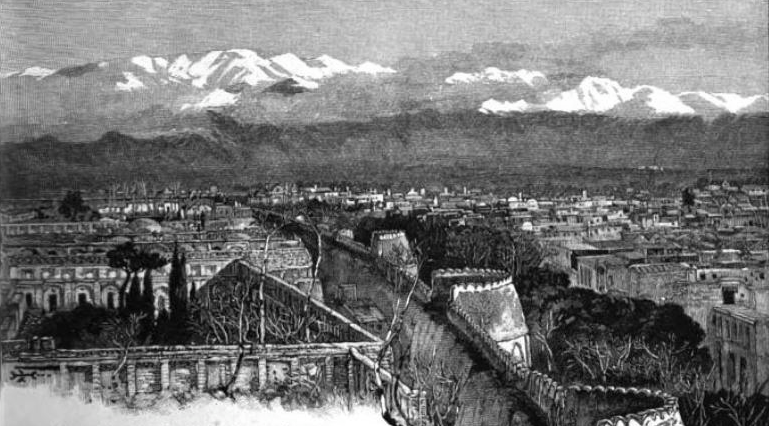
Caption: Tehran Citadel (Arg) during the Qajar Era
However, Naser al-Din Shah, who was fond of amusements and peculiar entertainments, set up a private zoo and personally took care of the breeding and maintenance of various wild animals in this zoo, which was located at the Doshan Tappeh Palace, built on top of an abandoned hill overlooking the foothills of the Alborz mountains. At that time, since the Doshan Tappeh area was the habitat of various wild animals and the Shah occasionally went there to hunt leopards, he had the palace constructed so that he could rest there during his hunting trips. For this reason, he ordered the construction of a road from the Doshan Tappeh Gate (now Shohada Square) heading eastward, and a garden was to be established there.
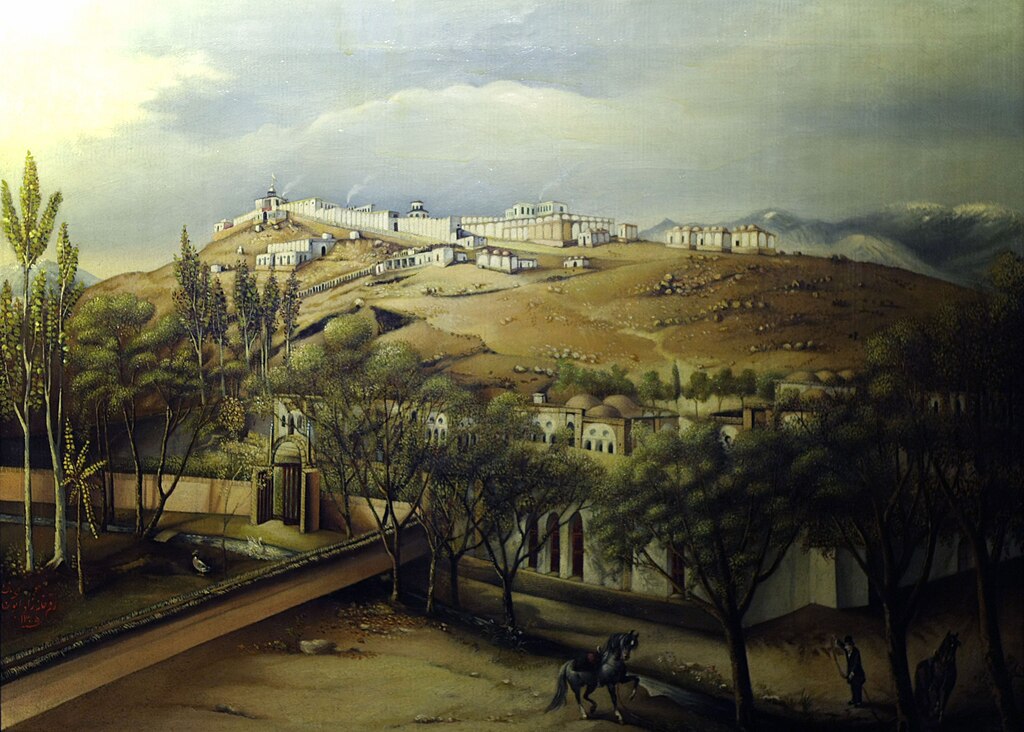
Caption: Painting of the Doshan Tappeh Palace and Garden
After returning from Europe, the Shah ordered the construction of a chaussée (a paved road) from Tehran to the shrine of Shah Abdol-Azim for the convenience of the people, and another road built purely to satisfy his personal wishes, leading to the Doshan Tappeh garden. Although the construction of the latter road began much later than the Tehran–Abdol-Azim road, it was completed much sooner—even though it passed through a rocky, and hard-to-access terrain, with natural obstacles like rainwater, snow, and a raging river.
After this chaussée connecting Tehran to his private zoo was built, Naser al-Din Shah took every opportunity to visit the area and showed a particular fondness for all the animals. The opening of this paved road allowed the Qajar monarch to quickly reach his beloved animals whenever he wished. For this reason, the road held exceptional importance for him, and he personally attended its inauguration. The special ceremony held to open this road is yet another sign of royal eccentricity.
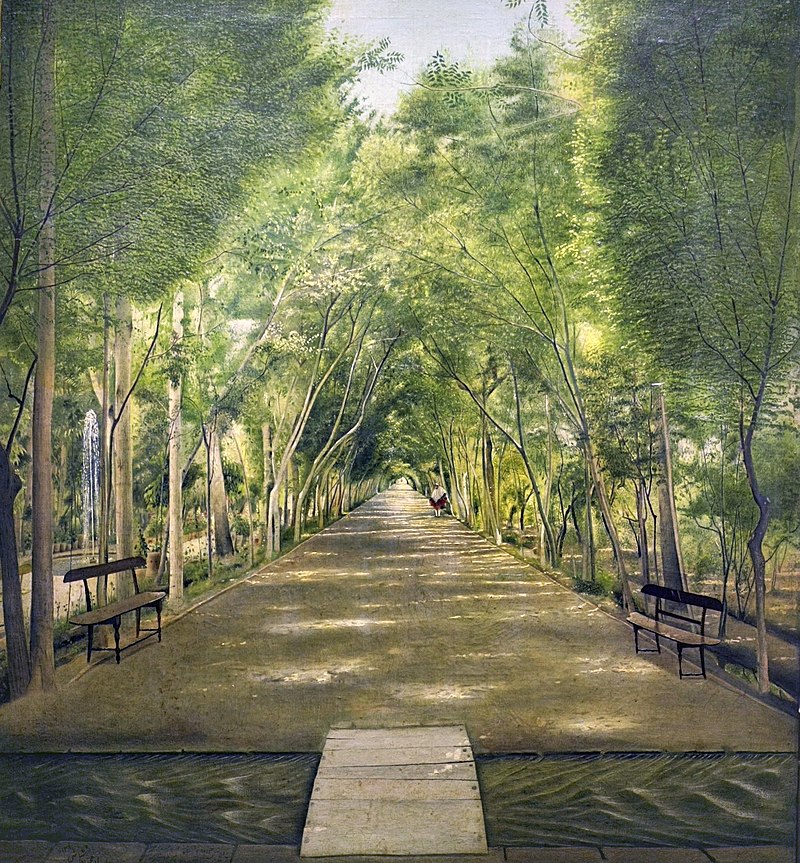
Caption: Painting of One of the Pathways in the Doshan Tappeh Garden by Mohammad Ghaffari Kamal-ol-Molk
Documents at hand show that on the 2nd of Ramadan 1291 AH (October 13, 1874 AD), the European engineer in charge of the road construction project organized an unprecedented ceremony for the inauguration. He built a triumphal arch made of flowers and placed on top of it the emblem of the Lion and Sun along with an inscription in honour of the Shah. Around one hundred large flags waved on top of poles (above smaller flags that bore the Shah’s name beside metal plaques). Everything was tied together with bouquets of flowers.
On that day, the engineer had blocked the road with a chain and a silver lock, and upon the Shah’s arrival, he respectfully presented the key during a formal ritual. The Shah, who enjoyed such displays and was fond of anything new, was very pleased with the ceremony that had been arranged. Then, with the firing of 21 cannons followed by the national anthem, the opening of Iran’s first chaussée was formally announced. This marks the first recorded instance of the national anthem being played at an official ceremony. On that day, all ministers and high-ranking military and civilian officials stood in line along the road, and in addition, four infantry regiments were stationed along the route, each wearing red uniforms specially tailored for the occasion, standing two meters apart.
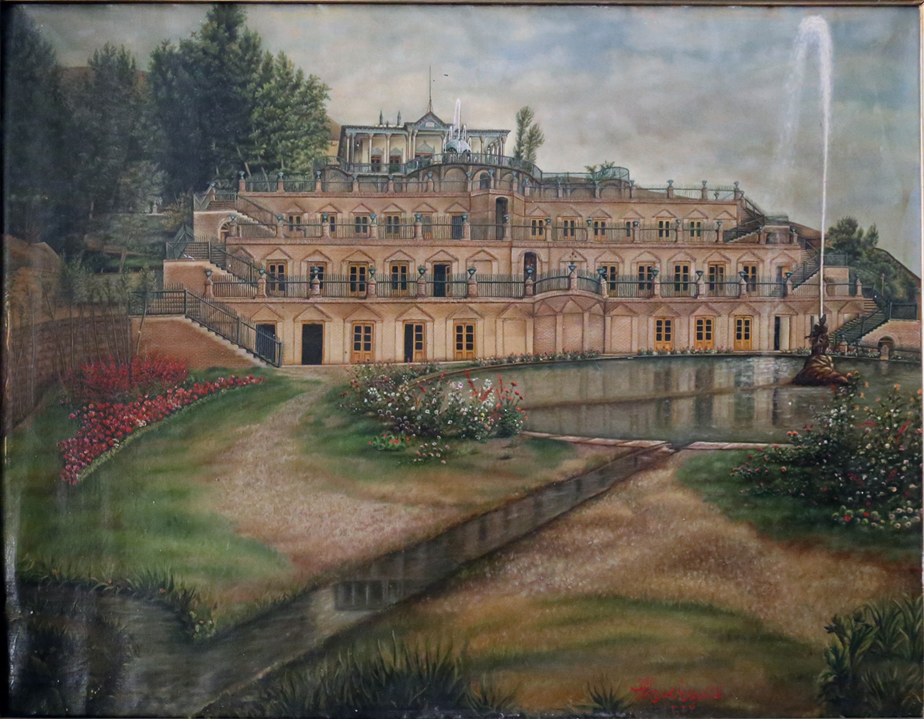
Caption: Painting of the Doshan Tappeh Palace and Garden by Mehdi Mosavvar al-Molk
When the key to the lock was presented to the Shah on a silver tray for the official opening of the road, a small pouch containing 14 tomans was also placed beside it—apparently leftover funds from the construction budget. The Shah, pleased with the savings and thankful for the honesty of the European engineer, took the pouch from the tray and put it in his pocket.
The triumphal arch also received high praise from the Shah, and he was astonished with the freshness of the flowers used in its decoration. Upon being informed that a large number of workers had stayed up the entire previous night to decorate it, he verbally thanked them—but did not think to distribute even a small portion of the money he had just pocketed to bring them some joy.
Then, casting a glance at the road, and after the European engineer explained that it had been built according to the latest road construction standards, the Shah nodded in approval and expressed his gratitude to Mirza Hossein Khan Sepahsalar (the Minister of Foreign Affairs at the time), who had overseen the construction. The next day, as an official sign of his satisfaction, the Shah promoted him to the rank of Sepahsalar (commander-in-chief).
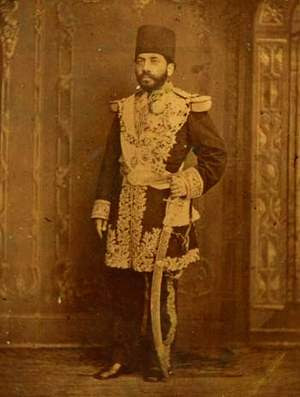
Caption: Mirza Hossein Khan Sepahsalar, then Minister of Foreign Affairs, who oversaw the construction of the Doshan Tappeh chaussée
Ever since earlier times, multiple roads led to the village of Niavaran, most of which resembled garden alleys. On both sides of these old roads, trees and bushes grew, creating a pleasant and scenic view. As the construction of the Niavaran garden and summer palaces began in that area, these garden alleys gradually became busier with traffic.
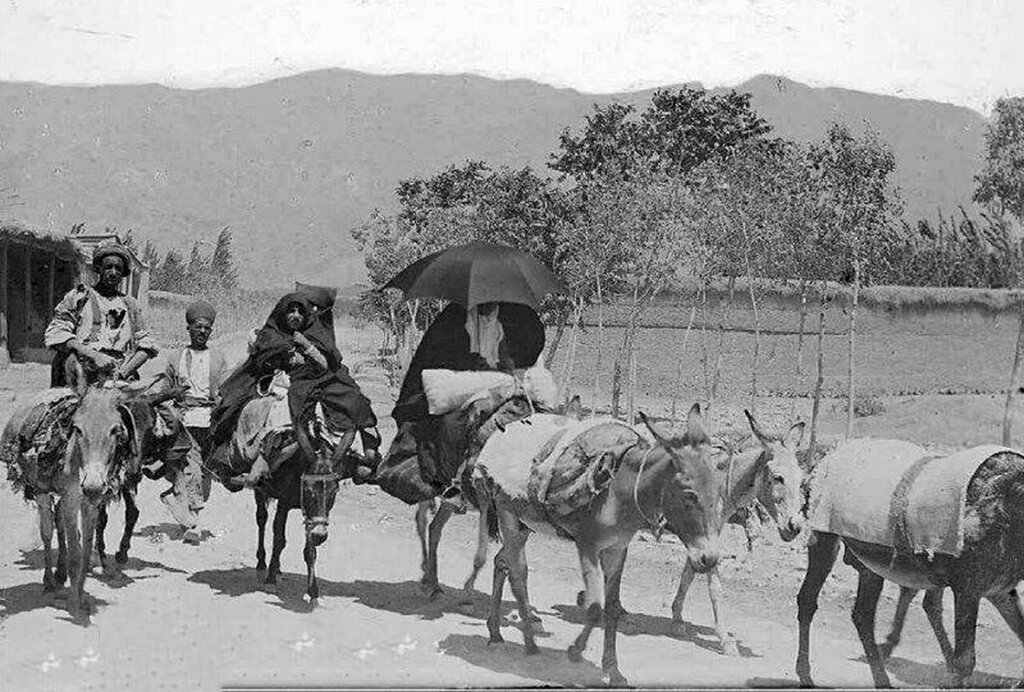
Caption: Travelers on the Old Shemiran Road
The roads leading to the Niavaran garden were still unpaved and dusty, and they were watered only when the Shah passed through. Finally, in 1292 AH (1875 AD), one year after the grand opening of the Doshan Tappeh chaussée, Naser al-Din Shah ordered one of the roads leading to Niavaran to be covered with gravel. This road, parts of which are now in today’s Pasdaran Street and Sayyad Shirazi Highway, was a very long route about 2 Farsakhs (approximately 12 kilometres) that connected the village of Niavaran—passing through Soltanabad Garden, the Mint, and the Armory—to the northern gate of Tehran, known as Shemiran Gate.
Numerous streets from the east and west were connected to this road, guiding travellers to nearby destinations such as the Aghdasieh and the Manzariyeh Palace. The street leading to Aghdasieh Palace is today called Aghdasieh Street, and the street leading to Manzariyeh Palace is today’s Niavaran Street.
The road that continued from Shemiran Gate heading north to the Niavaran garden, like today, passed along the “west” side of the garden. At that time, the only access to the garden was through this western gate, which remains the public entrance (ticket office) to the Niavaran Cultural-Historical Complex today. Travellers, after passing through the “Sardare Ali” (AKA Bab-e Ali meaning Royal Gate) of the garden, would enter a courtyard enclosed by a low building where guards and servants lived. Then, passing beneath an archway, they would reach the garden of the summer complex, from which the northern façade of the Shah’s palace could be seen.
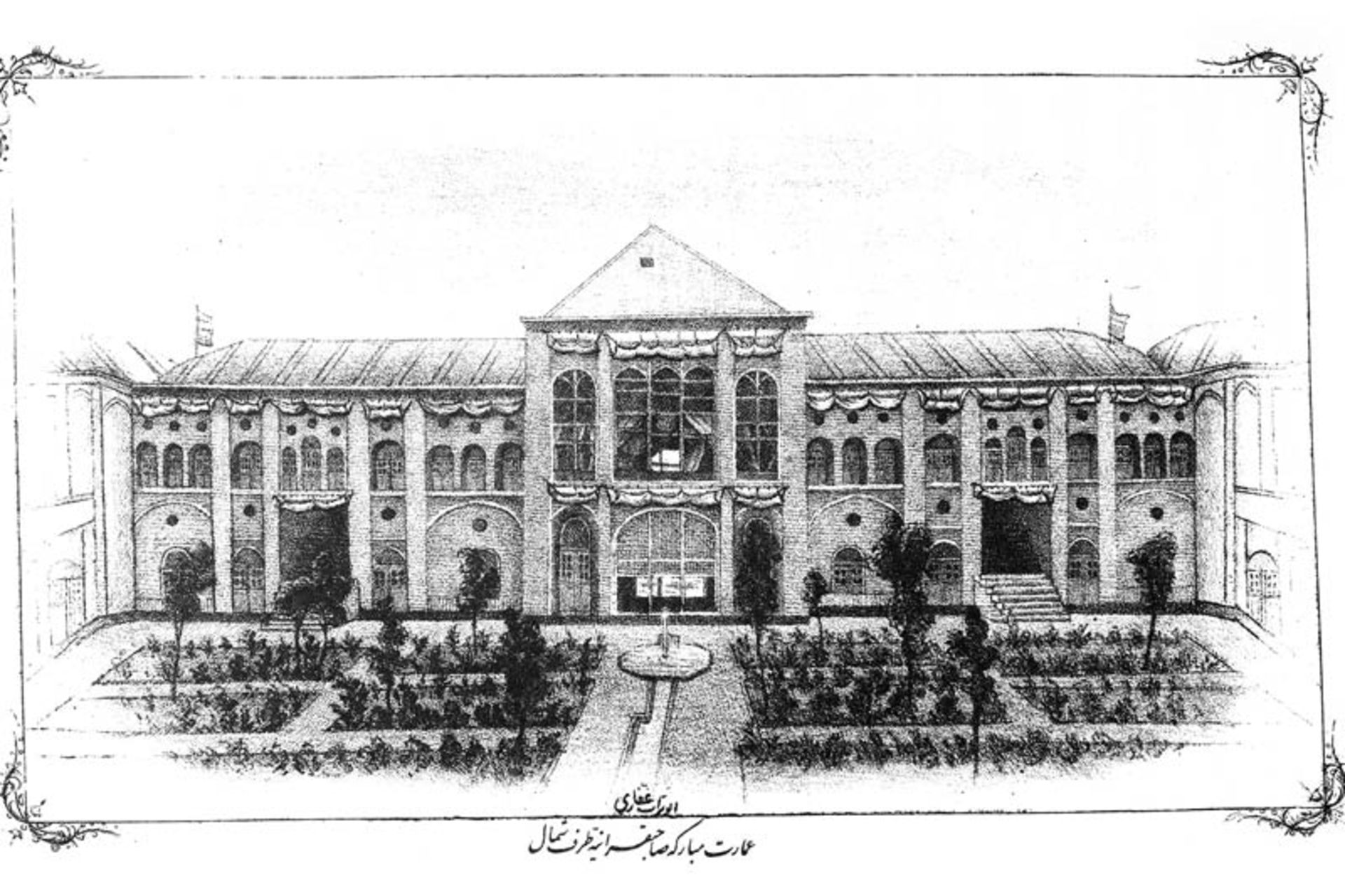
Caption: Sahebqaranieh Palace from the North – by Aboutorab Ghaffari
This building and its spaces—including the enclosed courtyard, the guardhouse and servants' quarters, the archway, and the northern façade of the palace—fortunately all remain intact today. The public access route follows precisely the same path described above.
Catpion: Current condition of the enclosed courtyard, which visitors entered after passing through the Sardare Ali (Royal Gate).
Caption: Current condition of the low-rise guardhouse building of the Niavaran garden and summer palace.